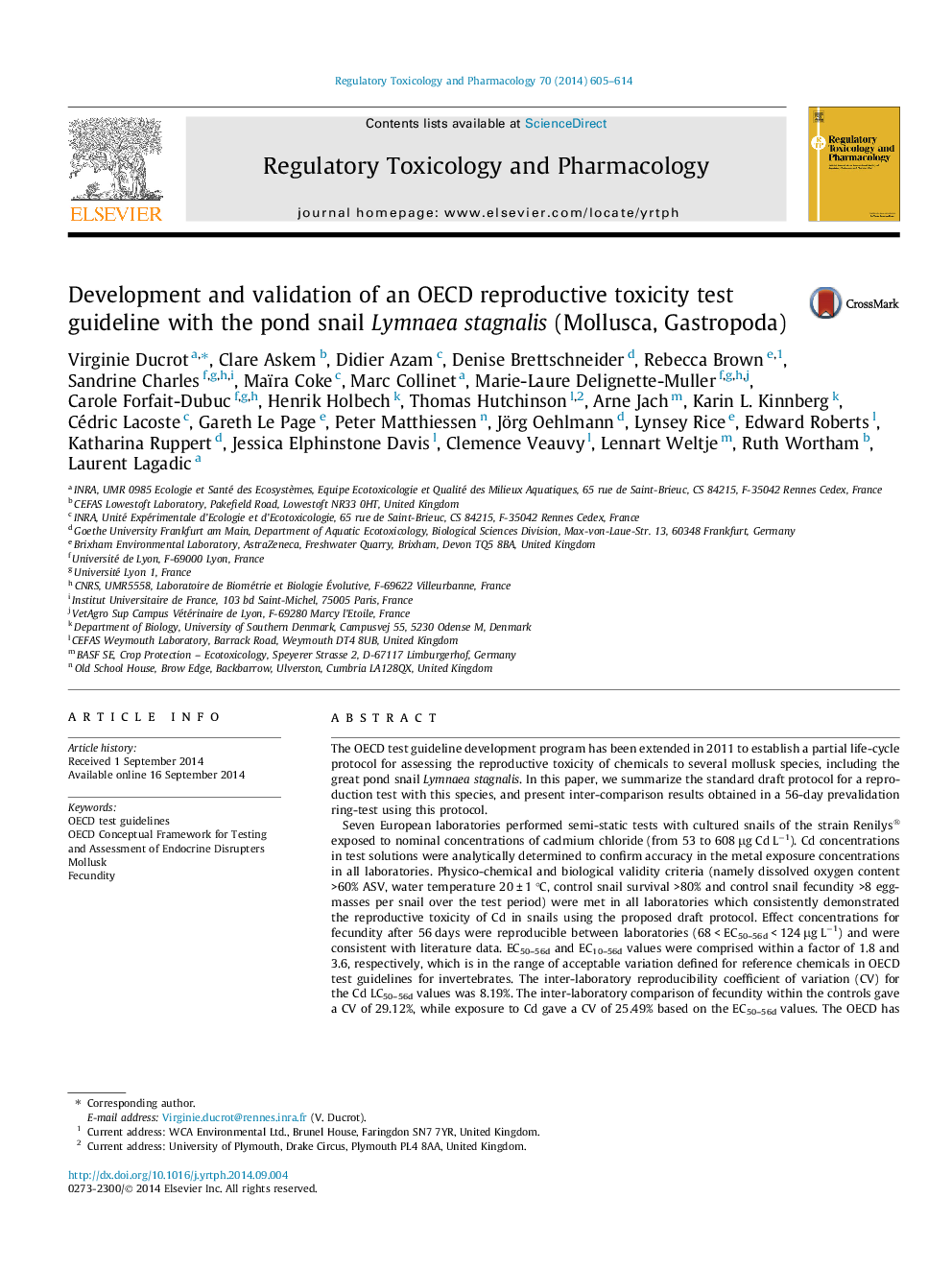| کد مقاله | کد نشریه | سال انتشار | مقاله انگلیسی | نسخه تمام متن |
|---|---|---|---|---|
| 5856442 | 1562130 | 2014 | 10 صفحه PDF | دانلود رایگان |

- An OECD reproductive toxicity test guideline with Lymnaea stagnalis has been developed.
- A draft test protocol was established and used to assess effects of cadmium (7 labs).
- EC50 values were reproducible and consistent with literature data.
- Successful prevalidation of the draft protocol was acknowledged by OECD in 2013.
- The consolidated test protocol is currently used for a validation ring-test (14 labs).
The OECD test guideline development program has been extended in 2011 to establish a partial life-cycle protocol for assessing the reproductive toxicity of chemicals to several mollusk species, including the great pond snail Lymnaea stagnalis. In this paper, we summarize the standard draft protocol for a reproduction test with this species, and present inter-comparison results obtained in a 56-day prevalidation ring-test using this protocol.Seven European laboratories performed semi-static tests with cultured snails of the strain Renilys® exposed to nominal concentrations of cadmium chloride (from 53 to 608 μg Cd Lâ1). Cd concentrations in test solutions were analytically determined to confirm accuracy in the metal exposure concentrations in all laboratories. Physico-chemical and biological validity criteria (namely dissolved oxygen content >60% ASV, water temperature 20 ± 1 °C, control snail survival >80% and control snail fecundity >8 egg-masses per snail over the test period) were met in all laboratories which consistently demonstrated the reproductive toxicity of Cd in snails using the proposed draft protocol. Effect concentrations for fecundity after 56 days were reproducible between laboratories (68 < EC50-56d < 124 μg Lâ1) and were consistent with literature data. EC50-56d and EC10-56d values were comprised within a factor of 1.8 and 3.6, respectively, which is in the range of acceptable variation defined for reference chemicals in OECD test guidelines for invertebrates. The inter-laboratory reproducibility coefficient of variation (CV) for the Cd LC50-56d values was 8.19%. The inter-laboratory comparison of fecundity within the controls gave a CV of 29.12%, while exposure to Cd gave a CV of 25.49% based on the EC50-56d values. The OECD has acknowledged the success of this prevalidation exercise and a validation ring-test involving 14 laboratories in Europe, North- and South-America is currently being implemented using four chemicals (Cd, prochloraz, trenbolone and tributyltin).
Journal: Regulatory Toxicology and Pharmacology - Volume 70, Issue 3, December 2014, Pages 605-614